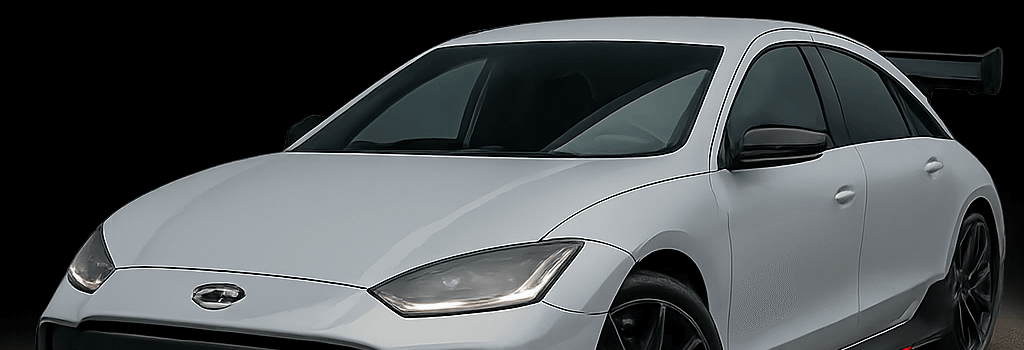Hyundai Ioniq 6 N: Next-Gen Performance EV Overview

The Ioniq 6 N builds on the runaway success of the Ioniq 5 N by cranking up power, sharpening handling, and delivering a richer soundscape. Unveiled at the 2025 Goodwood Festival of Speed during Hyundai N’s 10th anniversary year, this sedan blends cutting-edge EV hardware with motorsport-inspired engineering to offer more thrills per charge.
Performance Architecture and Powertrain
Under the sculpted hood resides a dual-motor all-wheel-drive system churning out a combined 641 hp (478 kW) and 568 lb-ft (770 Nm) of torque. These figures match the Ioniq 5 N, but key upgrades make the 6 N feel even sharper:
- 800-Volt Electrical Platform: Reduces I²R losses and supports ultra-fast charging up to 350 kW via CCS Combo 2.
- Dual-Mode Inverter Strategy: At outputs below 215 hp (160 kW), a silicon-carbide (SiC) inverter operates at high switching frequencies (up to 100 kHz) for maximum efficiency. Above that threshold, the system seamlessly transitions to a high-current silicon inverter capable of sustaining peak currents over 1,200 A.
- Advanced Motor Cooling: Dedicated liquid-cooling channels in each motor housing keep winding temperatures below 120 °C, enabling up to eight back-to-back five-minute hot-lap sessions in Endurance mode without derating.
Battery and Thermal Management
The Ioniq 6 N uses an 84 kWh pouch-cell lithium-nickel-cobalt-manganese (NCM) battery pack with a sophisticated blade-type thermal plate. Constant thermal conditioning maintains cell temperatures between 25 °C and 40 °C, optimizing both charging speed and discharge consistency. On the WLTP cycle, it promises up to 291 miles (469 km) of range; expect around 250 miles (400 km) under the EPA standard.
Chassis, Brakes, and Regenerative Braking
Hyundai’s engineers reinforced the chassis with additional aluminum braces to increase torsional rigidity by 15 percent over the regular Ioniq 6. The brake system combines 15-inch ventilated discs with Brembo four-piston calipers at the front and dual-piston units at the rear.
- Regenerative Braking: Up to 0.6 g of deceleration can be recaptured electronically before the friction discs engage.
- Pirelli P-Zero 5 Tires: 20-inch wheels wearing 275/35R20 tires provide a wide contact patch for ultimate grip.
Acoustic Engineering and N e-Shift
“We wanted the Ioniq 6 N to feel alive,” says Joon Park, Head of Hyundai N. “That meant an authentic engine note experience coupled with sharper simulated gear shifts.”
An upgraded DSP (digital signal processing) system now drives a 16-speaker array—eight inside and eight outside—to reproduce three layers of engine sound sampled from the i20 WRC rally car. The N e-Shift virtual gearbox features shorter gear ratios for quicker paddle shifts, enhancing the sensation of acceleration even in an electric car with a fixed final drive.
Aerodynamics and N Performance Parts
The sedan’s low-slung silhouette and pronounced gooseneck rear wing were sculpted using Computational Fluid Dynamics (CFD) to generate up to 200 kg of downforce at 186 mph (300 km/h) without raising the drag coefficient above 0.23. Hyundai Design Europe Chief Designer Eduardo Ramirez explains that a modular underbody diffuser and optional adjustable gurney flap let owners fine-tune their front-to-rear balance for street or track use.
Charging Infrastructure and Track Integration
- 350 kW Fast Charging: CCS Combo 2 compatibility allows replenishing 80 percent charge in under 18 minutes at Ionity and EVgo ultrafast stations.
- Battery Pre-Conditioning: On approach to a DC charger, the BMS pre-heats or cools the pack to optimal temperature, reducing thermal stress.
- Track Day Strategy: 15 minutes of charging can fund another 20-minute high-intensity run, provided a rare 350 kW charger is available at your circuit.
Real-World Impressions and Expert Opinions
Early testers at Sachsenring and Spa-Francorchamps report razor-sharp steering feedback and outstanding mid-corner stability. Car and Driver recorded a 7:15 lap at the Nürburgring Nordschleife, putting the Ioniq 6 N within striking distance of the Tesla Model 3 Performance and Polestar 2.
Pricing and Market Outlook
With the base Ioniq 6 starting at $37,850 and the Ioniq 5 N carrying a $23,600 premium over its base model, the Ioniq 6 N is expected to land around $60,000 in U.S. markets. Global supply chain fluctuations, tariffs, and EV incentives will ultimately shape final pricing and timing of delivery.
Conclusion
The Ioniq 6 N demonstrates that electrification and exhilaration can coexist. Through advanced power electronics, meticulous thermal management, motorsport-grade acoustics, and track-focused aerodynamics, Hyundai N continues to redefine what a performance EV can be.